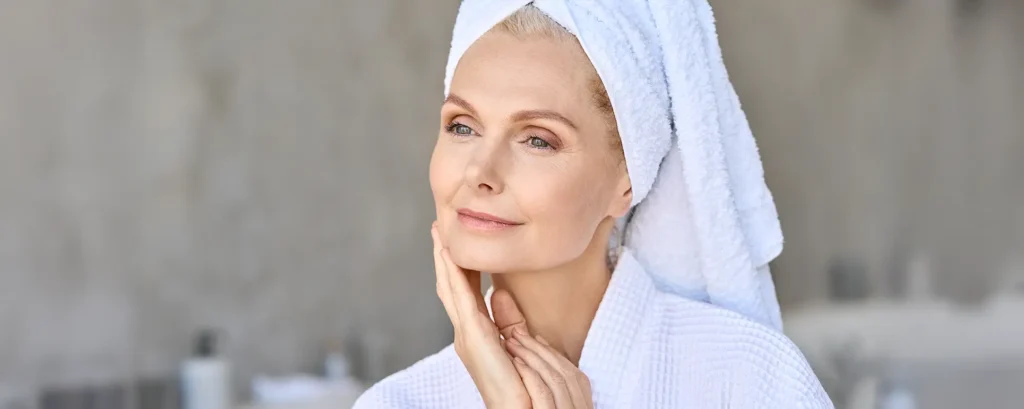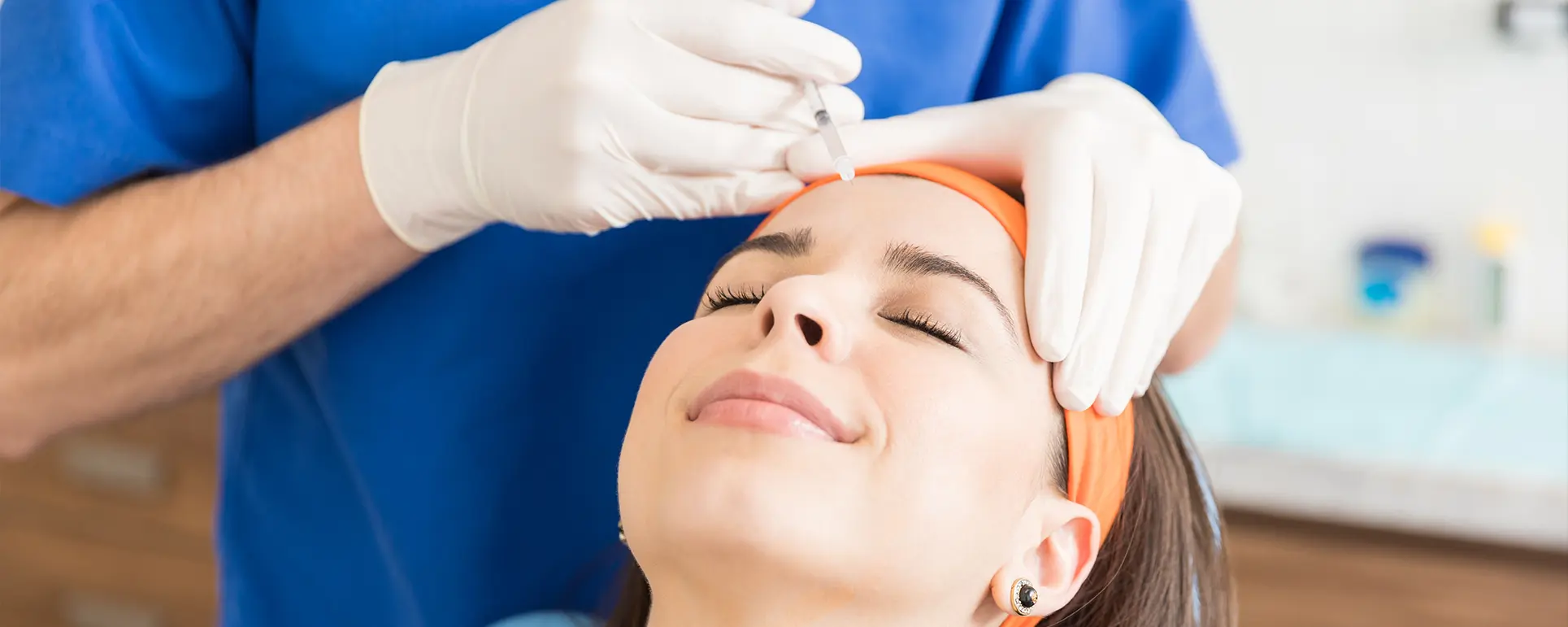Cosmetic dermatology is a rapidly growing sector in the UK, with an increasing number of people seeking professional treatments to enhance their appearance, improve their skin health, and combat the visible signs of aging. From minimally invasive procedures like Botox and dermal fillers to advanced treatments such as laser therapy for pigmentation, hair removal, and skin resurfacing, the options available have expanded significantly in recent years. This booming industry is not only changing the way we think about skincare but is also becoming more accessible to a wider audience.
The demand for cosmetic dermatology services has surged in the UK, driven by factors such as greater awareness of non-surgical options, advancements in treatment techniques, and a growing desire among individuals to maintain a youthful, vibrant appearance. In particular, treatments for skin rejuvenation, acne scars, pigmentation correction, and wrinkle reduction are at the forefront of this shift. As technology continues to improve, new treatments are emerging regularly, offering innovative solutions for a range of aesthetic concerns.
In this article, we will take a closer look at the latest data surrounding cosmetic dermatology in the UK. We’ll explore key statistics that highlight the volume of treatments performed each year, the demographic breakdown in terms of age and gender, and the latest trends in skincare that are shaping the industry. By examining these figures, we can gain a deeper understanding of the growing popularity of cosmetic dermatology, the factors influencing these trends, and where the market is headed in the near future. Whether you’re considering a cosmetic procedure or simply interested in how the industry is evolving, the numbers behind the trends provide valuable insight.
1. UK Cosmetic Dermatology Market Size
The cosmetic dermatology market in the UK is experiencing remarkable growth, with the industry expected to surpass £3 billion by 2025. This rapid expansion is being driven by a combination of factors, most notably the rising demand for non-invasive aesthetic treatments that allow individuals to enhance their appearance with minimal disruption to their daily lives. Among the most sought-after procedures are Botox, dermal fillers, and various laser therapies, all of which have gained immense popularity in recent years.
As the industry continues to thrive, it’s important to understand the key trends and dynamics that are propelling this growth. From shifts in consumer behaviour to cutting-edge technological advancements, several factors are contributing to the transformation of cosmetic dermatology into a mainstream aspect of modern self-care.
Key Trends Driving Growth:
Non-Surgical Treatments: A Shift Towards Minimally Invasive Procedures
One of the primary drivers behind the growth of cosmetic dermatology is the increasing preference for non-surgical treatments. Many individuals are now opting for Botox injections, dermal fillers, and other minimally invasive procedures as a way to achieve youthful, rejuvenated looks without the need for extensive surgery or lengthy recovery periods. These procedures offer significant cosmetic benefits with little to no downtime, making them an attractive option for those looking for quick, effective solutions to common skin concerns like wrinkles, fine lines, and sagging.
The shift toward non-surgical options is also partially due to the evolving perception of cosmetic treatments. In the past, cosmetic enhancements were often associated with invasive surgery and long recovery times, but today’s minimally invasive treatments offer an easier and less intimidating way to achieve results.
Rising Awareness and Influence of Social Media
Another powerful force driving the surge in demand for cosmetic dermatology is the increasing awareness of aesthetic procedures, largely fuelled by social media platforms and influencer culture. Celebrities, influencers, and beauty bloggers have played a pivotal role in normalising cosmetic treatments and promoting them to a broader audience. Social media platforms like Instagram and TikTok, which are rich with beauty tutorials, before-and-after transformation videos, and personal testimonials, have made cosmetic dermatology more visible and approachable for people of all ages.
As a result, individuals who may have once felt hesitant about pursuing cosmetic enhancements are now more informed and empowered to explore options for improving their appearance.
Technological Advancements: Making Procedures More Effective and Accessible
Technological advancements have also played a major role in the growth of the cosmetic dermatology market. With each passing year, new innovations in laser technology, skin rejuvenation treatments, and pigmentation correction procedures continue to raise the bar in terms of effectiveness and precision. For example, advanced lasers now allow for faster recovery times, greater accuracy, and improved results in treating skin concerns like age spots, acne scars, and rosacea.
In addition to improving the results of various procedures, technological advancements have also made treatments more accessible to the general public. As more clinics invest in state-of-the-art equipment, the cost of treatments has gradually decreased, allowing a broader range of individuals to access high-quality care. For many, these advancements have made cosmetic dermatology a viable option for enhancing their appearance without breaking the bank.
Furthermore, the rise of teledermatology, or virtual consultations, has expanded access to expert advice, enabling people to discuss their skin concerns with professionals without the need for an in-person visit.
2. Age and Gender Breakdown of Cosmetic Dermatology Treatments

The rise of cosmetic dermatology in the UK has brought with it a shift in who is seeking treatments. Traditionally, the industry has been viewed as catering mostly to older individuals seeking to reverse the signs of aging, but in recent years, there has been a noticeable shift in both age demographics and gender representation. More and more individuals from younger age groups are opting for treatments that focus on prevention rather than correction, and men are increasingly exploring aesthetic options that were once predominantly popular among women.
Age Demographics:
Younger Consumers: Preventative Treatments on the Rise
While anti-aging treatments remain the hallmark of cosmetic dermatology, a growing trend has emerged among younger consumers, particularly in their 20s and 30s, who are opting for treatments as a preventive measure. These younger individuals are not necessarily looking to address visible signs of aging, but instead, they are aiming to stave off wrinkles, fine lines, and other signs of aging before they appear.
Botox injections and dermal fillers, traditionally associated with older clients, have gained popularity among younger people who view these treatments as part of a proactive skincare regimen. The idea of “preventative Botox” is now more widely accepted, with younger clients seeking subtle enhancements that delay the appearance of wrinkles or prevent deep lines from forming in the future.
This trend is likely due to a combination of factors, including increased awareness of cosmetic procedures through social media, the influence of beauty influencers, and the availability of less invasive treatments. Preventative treatments are often viewed as a way to slow down the aging process, and for many, they are an investment in maintaining a youthful appearance over the long term.
Older Consumers: Anti-Aging as the Primary Driver
While younger consumers are embracing preventive care, the largest demographic still remains individuals in their 40s and 50s, who turn to cosmetic dermatology primarily for anti-aging treatments. As skin naturally loses its elasticity with age, fine lines, wrinkles, and sagging skin become more pronounced. At this stage, individuals are more likely to seek out Botox, dermal fillers, and other anti-aging procedures to rejuvenate their appearance and restore a more youthful, refreshed look.
In addition to the aesthetic benefits, many older consumers also seek cosmetic dermatology treatments to address skin concerns related to aging, such as age spots, uneven pigmentation, and skin texture. The increasing availability of non-surgical solutions has made these treatments much more accessible and appealing, especially for those looking to avoid invasive surgeries or lengthy recovery times.
Gender Breakdown:
Women: Still the Majority of Patients
Women make up the majority of cosmetic dermatology patients, accounting for approximately 80-85% of the market. Botox, dermal fillers, lip enhancements, and chemical peels are particularly popular among female patients, who often seek treatments that enhance their facial features, smooth wrinkles, and address skin texture issues. The desire to maintain a youthful, refreshed appearance is a major factor driving these treatments.
Men: Increasing Acceptance and Participation
Men are increasingly turning to cosmetic dermatology, with the male demographic now making up about 15-20% of patients. This figure is expected to grow as more men embrace treatments that help reduce wrinkles, rejuvenate skin, and address other aesthetic concerns. Botox and dermal fillers are becoming more common among men, but many opt for procedures that provide a subtle, natural look rather than dramatic changes.
3. Rising Interest in Skin Rejuvenation and Pigmentation Correction

Skin rejuvenation and pigmentation correction have become two of the most sought-after treatments in cosmetic dermatology. As people increasingly look for ways to maintain youthful, healthy skin or address imperfections, these treatments are growing in demand. Advances in technology and a wider range of accessible treatments have made these options more appealing to patients of all ages.
Skin Rejuvenation:
Skin Rejuvenation Treatments on the Rise
Skin rejuvenation encompasses a variety of procedures aimed at improving the overall appearance of the skin. As individuals become more aware of the importance of maintaining skin health, treatments like laser resurfacing, microneedling, and chemical peels have gained popularity. These treatments help restore radiance, reduce fine lines, and smooth out skin texture.
Fractional laser treatments are particularly in demand due to their ability to address skin imperfections such as sun damage and acne scars. These lasers treat only a fraction of the skin at a time, allowing for faster recovery with minimal downtime compared to traditional laser treatments. This has made fractional laser procedures a go-to choice for many patients seeking a refreshed complexion.
Microneedling has also become a popular, minimally invasive option for those looking to improve skin texture, reduce acne scars, or tackle fine lines. By stimulating the skin’s natural healing process, microneedling boosts collagen production, resulting in smoother, more even skin over time. The relatively low cost and minimal recovery time make it an appealing choice for individuals looking for visible results without the need for major procedures.
Additionally, chemical peels remain a staple in skin rejuvenation, helping to exfoliate dead skin cells and improve overall skin tone. They are often used to treat concerns like uneven pigmentation, acne, and fine lines.
Pigmentation Correction:
Rising Demand for Pigmentation Correction Treatments
Pigmentation issues such as age spots, sun spots, and melasma are common concerns, particularly among older adults. As the awareness of these issues has increased, so too has the demand for treatments that address uneven skin tone and pigmentation concerns.
Popular laser therapies are now commonly used to target dark spots and pigmentation irregularities. These treatments use focused light to break up excess pigment, resulting in a more even skin tone. Intense Pulsed Light (IPL) is another effective method that works similarly to lasers but with broader wavelengths of light, allowing it to treat a variety of pigmentation issues.
Topical treatments like hydroquinone and retinoids are also widely used to help reduce pigmentation over time. Hydroquinone works by lightening dark spots, while retinoids accelerate cell turnover, gradually fading spots and improving skin texture.
4. Botox and Dermal Fillers Lead the Way

Botox and dermal fillers continue to dominate the cosmetic dermatology industry, accounting for a significant share of the market. Both treatments are popular for their ability to enhance facial aesthetics with minimal downtime, making them go-to options for individuals seeking subtle enhancements without the need for surgery. Botox is renowned for its wrinkle-reducing capabilities, while dermal fillers help restore volume and contour to the face.
Botox Usage:
Anti-Wrinkle Treatments
Botox remains the leading choice for individuals looking to smooth out wrinkles and fine lines. It is most commonly used to treat areas like crow’s feet, forehead lines, and frown lines. By temporarily relaxing the muscles that cause these lines, Botox helps create a smoother, more youthful appearance. The procedure is quick, relatively painless, and requires minimal recovery time, making it highly popular for those looking for a fast solution to signs of aging.
Non-Traditional Uses of Botox
In addition to its traditional use for wrinkle reduction, Botox is increasingly being used for non-traditional purposes. One of the rising trends is jaw slimming, where Botox is injected into the masseter muscles to create a more defined, slimmer jawline. Botox has also become a popular treatment for excessive sweating (hyperhidrosis), as it temporarily blocks the sweat glands, providing relief for individuals who experience excessive sweating in areas like the underarms, hands, and feet.
Dermal Fillers:
Volume Restoration and Facial Contouring
Dermal fillers, particularly those made with Hyaluronic Acid (HA), are highly effective for volume restoration and facial contouring. As people age, the skin loses collagen and elasticity, leading to a decrease in facial volume. Dermal fillers can restore this lost volume, giving the face a fuller, more youthful appearance. These fillers are especially popular for enhancing areas like the cheeks, lips, and under-eye regions, where volume loss is often most noticeable.
Lip fillers, for example, have become a staple in the world of aesthetic treatments, helping to add plumpness and definition to the lips. Meanwhile, cheek fillers can lift and contour the face, creating a more balanced and youthful appearance. Nasolabial folds the lines that run from the sides of the nose to the corners of the mouth are also a common area treated with dermal fillers to restore volume and smoothness.
5. Private vs NHS Cosmetic Dermatology Treatments
While the NHS offers vital dermatological care, the demand for cosmetic dermatology procedures is mostly met through private clinics. These clinics provide a wider range of aesthetic treatments, such as Botox and dermal fillers, which aren’t typically covered by the NHS.
Private Treatments:
Quick Access and Variety of Options
Private clinics are often preferred for their faster access to treatments. Patients can usually book consultations and undergo procedures much quicker than they would through the NHS, where waiting times can be long. Moreover, private clinics offer a greater variety of treatments, from advanced laser therapies to more specialised options, which are usually unavailable through the NHS.
Personalised Care
Private clinics offer a more personalised approach with one-on-one consultations, ensuring that treatments are tailored to the patient’s specific skin concerns and goals. This is especially important for individuals seeking cosmetic enhancements like Botox or dermal fillers, as the treatments need to be customized to achieve natural-looking results.
NHS Limitations:
Focus on Medical Dermatology
The NHS mainly focuses on medical dermatology treatments for conditions like acne, eczema, and skin cancer. These treatments are aimed at improving skin health rather than appearance, which is why cosmetic procedures such as Botox and dermal fillers are not typically available through the NHS.
Waiting Times and Limited Services
NHS services are often impacted by long waiting times, especially for non-urgent consultations. Cosmetic dermatology procedures fall outside the NHS’s remit, meaning individuals seeking treatments like wrinkle reduction or facial volume restoration often have to look to private clinics for quicker access.
Final Thought: The Growing Demand for Cosmetic Dermatology in the UK
The cosmetic dermatology sector in the UK continues to grow, with increasing interest in treatments like Botox, dermal fillers, and skin rejuvenation. As more individuals seek solutions for skin aging, pigmentation issues, and overall skin health, the industry is evolving to meet the demand with new technologies and procedures. Whether you’re considering treatments for aesthetic purposes or skin health, understanding the latest trends and market data can help guide your decision-making.
You can get in touch with us to book a consultation with one of our expert dermatologists in London. We can help you understand your options and guide you in choosing the right treatment for your needs.
References:
- Bogle, R. (2020). Aesthetic Medicine and Non-Surgical Procedures: The Rise of Cosmetic Dermatology. Journal of Clinical Aesthetic Dermatology, 13(4), pp. 24-31. Available at: https://www.jcadonline.com
- Gold, M.H., & Biron, J.A. (2021). The Growing Demand for Non-Surgical Aesthetic Procedures in the UK: An Analysis of Trends and Patient Demographics. Dermatologic Surgery, 47(2), pp. 173-179. Available at: https://doi.org/10.1097/DSS.0000000000003085
- Leigh, I.M., & Kelsell, D.P. (2022). Advances in Pigmentation Treatment: From Topicals to Lasers. British Journal of Dermatology, 187(5), pp. 899-911. Available at: https://www.bjd-abcd.com
- Harris, D. (2019). Botulinum Toxin and Dermal Fillers: A Comprehensive Review of Their Safety and Efficacy in Aesthetic Dermatology. Journal of Cosmetic Dermatology, 18(3), pp. 465-472. Available at: https://onlinelibrary.wiley.com
- Naylor, M.E., & Smith, A.D. (2020). Aging, Botox, and Beyond: The Evolution of Aesthetic Dermatology in the United Kingdom. International Journal of Dermatology, 59(7), pp. 806-813. Available at: https://www.jidonline.org
